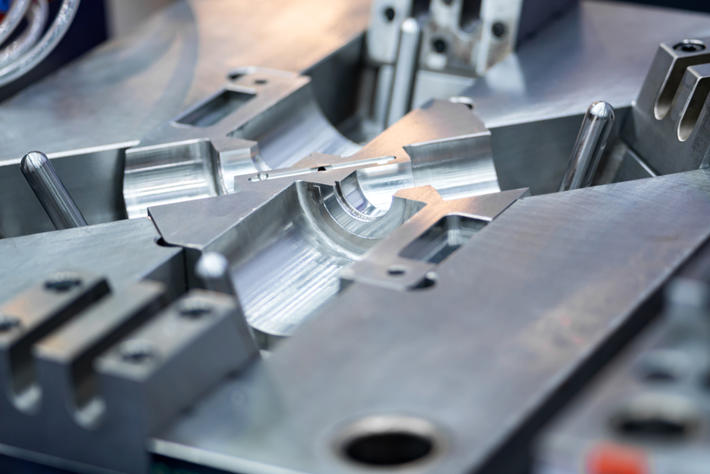
The environmental and socio-economic consequences of the EU duty on raw aluminum
A simulation of the extra costs and greater environmental impact applied to the automotive industry.
The EU duty on the import of raw aluminum was introduced several decades ago to protect the domestic production of primary aluminum.
The spirit of the provision had precise reasons: safeguarding a certain independence in the procurement of raw materials was important from a strategic point of view, equally important was, from an ethical point of view, to contribute as much as possible to the extraction of environmental resources also with the consumption of one's own territory, with the corollary of being able to experiment, apply and disseminate better methods in the world.
However, the results and consequences of the EU duty on aluminum imports were disappointing, if not unsuccessful. Of course, unpredictable external events such as the sudden socio-economic changes that took place globally in recent years have contributed, but only in the period 2008-2017 the production of primary aluminum has collapsed in the EU by 30% with the loss of more than a quarter. of production capacity. Today it is estimated that over 70% of primary needs are missing.
In the face of such a negative result with respect to the "protection" purposes of the production system, there are unfortunately a series of further consequences both from an environmental point of view and from a socio-economic point of view which, although extremely relevant, are normally neglected in the debate on the effects of trade policy.
However, an illustrative representation can be offered by simulating what is happening in the concrete case of the automotive sector, which is one of the most important sectors of modern economies.
The estimates developed show the amount of CO2 produced by the processing of raw aluminum necessary for the realization of the total number of vehicles manufactured in the EU in 2019 (source Ducker), assuming four distinct scenarios depending on the different CO2 content of the raw aluminum. The four scenarios were constructed starting from the available data relating to the production of primary aluminum in three different areas of the world (China, the Gulf area and Russia). These data show that:
• Primary aluminum 20t CO2 / t: 60 million tons of CO2 contained;
• Primary aluminum 10t CO2 / t: 30 million tons of CO2 contained;
• Primary aluminum 20t CO2 / t: 12 million tons of CO2 contained;
• Recycled aluminum 0.4t CO2 / t: 1 million tons of CO2 contained.
To verify which scenario is more likely, an estimate of the extra cost incurred by the automotive industry is reported due to the presence of the duty on raw aluminum, always calculated on the basis of the average light metal content per car (source Ducker). The calculation made is based on the hypothesis that the entire extra-cost incurred by the aluminum downstream companies is "passed" to the downstream industries.
The calculated data show that the extra-cost of the duty in the automotive sector by type of semi-finished product (with a rate of 80 euros / t) is:
• 154 million euros for aluminum smelting;
• 45 million euros for aluminum rolls;
• 25 million for the extraction;
• 14 million for forging.
The consequences of the EU duty on aluminum imports: the carbon footprint of semi-finished aluminum products is worsening
Therefore, if we consider the extra cost generated by the presence of the duty, it clearly emerges that the market outcome in reality will tend towards the first of the four scenarios, or towards the one in which raw aluminum with a high carbon content is used. The motivation is due to the fact that the duty generates an extra cost for companies active in the processing of semi-finished aluminum products (downstream) which, in the event that they can proportionally increase the prices of their products, inevitably see their margins decrease and therefore their own survival spaces.
The possibility of pass-through can in fact be hypothesized only for the few companies that have cutting-edge technologies not available outside the EU and which, in any case, are destined to be imitated (possibly with different times depending on the relative technological distance) . In other cases, the final industries that use aluminum semi-finished products will tend to favor low-priced foreign suppliers.
Even the use of the second raw material, which sees its market space increased thanks to the artificially higher price resulting from the EU duty on raw aluminum, cannot be limited as the margins of competition on the basis of price are still reduced.
The overall result is that of having generated conditions that make it probable the purchase of aluminum semi-finished products from abroad by downstream industries or, if possible, incentives to move production abroad, all without solving the problem environmental.
What has been highlighted underlines the urgent need to overcome the sclerosis of European institutions which, having taken a path in other times (import duties on raw materials), have not so far managed to correctly perceive the profound changes that have taken place in the supply chain and in the surrounding area, reasonably modifying the path even when the path taken has proved clearly wrong.
Source: A&L Aluminum Alloys Pressure Diecasting Foundry Techniques


